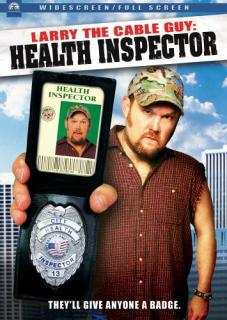After some nasty outbreaks, reports of filthy conditions, and a perceived disregard for food safety in Canberra, the home of all those Australian government types has decided to try and do something.
ABC reports a report considering the options for a food safety system with ‘scores on doors’ for Canberra’s restaurants and cafes has been released by the ACT Government.
It includes four different models being used overseas to publicly display the results of recent health .png) inspections at food premises.
inspections at food premises.
The Chief Minister Katy Gallagher says regulatory impact statements are not usually released for public comment, but there has been lots of interest in how such a scheme would operate in Canberra.
"They are usually used for cabinet deliberations when we are determining which to go," Ms Gallagher said.
"But I think the level of public interest in food safety and the level of industry interest in what happens next, I think its sensible way to go to release it, and then have the conversation with the same figures on the table."
Ms Gallagher says the proposals range from a voluntary scheme to display food safety ratings, through a mandatory one for the entire industry.
"There’s no doubt that schemes like this focus the mind of restaurant owners and indeed improve food safety," she said.
However, the Canberra Times reports that Jeff House, chief executive of ClubsACT (how quaint) says no way, and that ”Commonsense would indicate 30 per cent of Canberra’s population does not have a food-borne illness every year.”
Commonsense is only common if you’ve thought about it.
The 30 per cent of all people barfing each year from food or water is still the number used by the World Health Organization, Canada and Australia, although the Americans have downsized their estimates to 16.7 per cent.
The benefits of restaurant inspection disclosure are often oversold, the uncertainties underplayed, while detractors argue it’s all unfair. Been there, heard most of it.
House, instead of arguing against minimal government standards, why not embrace the ratings and exploit the positive grades: the best food facilities will go far beyond minimal standards.
The best restaurants will embrace standards, strive to make them better, and go far beyond the minimal expectations of government. The best restaurants will proactively test to verify their food .jpg) safety systems are working, will transparently publicize those results and will brag about their excellent food safety by marketing at retail so consumers can actually choose safe food.
safety systems are working, will transparently publicize those results and will brag about their excellent food safety by marketing at retail so consumers can actually choose safe food.
Filion, K. and Powell, D.A. 2009. The use of restaurant inspection disclosure systems as a means of communicating food safety information. Journal of Foodservice 20: 287-297.
Abstract
??The World Health Organization estimates that up to 30% of individuals in developed countries become ill from food or water each year. Up to 70% of these illnesses are estimated to be linked to food prepared at foodservice establishments. Consumer confidence in the safety of food prepared in restaurants is fragile, varying significantly from year to year, with many consumers attributing foodborne illness to foodservice. One of the key drivers of restaurant choice is consumer perception of the hygiene of a restaurant. Restaurant hygiene information is something consumers desire, and when available, may use to make dining decisions.
Filion, K. and Powell, D.A. 2011. Designing a national restaurant inspection disclosure system for New Zealand?. ?Journal of Food Protection 74(11): 1869-1874
http://www.ingentaconnect.com/content/iafp/jfp/2011/00000074/00000011/art00010
?The World Health Organization estimates that up to 30% of individuals in developed countries become ill from contaminated food or water each year, and up to 70% of these illnesses are estimated to be linked to food service facilities. The aim of restaurant inspections is to reduce foodborne outbreaks and enhance consumer confidence in food service. Inspection disclosure systems have been developed as tools for consumers and incentives for food service operators. Disclosure systems are common in developed countries but are inconsistently used, possibly  because previous research has not determined the best format for disclosing inspection results. This study was conducted to develop a consistent, compelling, and trusted inspection disclosure system for New Zealand. Existing international and national disclosure systems were evaluated. Two cards, a letter grade (A, B, C, or F) and a gauge (speedometer style), were designed to represent a restaurant’s inspection result and were provided to 371 premises in six districts for 3 months. Operators (n = 269) and consumers (n = 991) were interviewed to determine which card design best communicated inspection results. Less than half of the consumers noticed cards before entering the premises; these data indicated that the letter attracted more initial attention (78%) than the gauge (45%). Fifty-eight percent (38) of the operators with the gauge preferred the letter; and 79% (47) of the operators with letter preferred the letter. Eighty-eight percent (133) of the consumers in gauge districts preferred the letter, and 72% (161) of those in letter districts preferring the letter. Based on these data, the letter method was recommended for a national disclosure system for New Zealand.
because previous research has not determined the best format for disclosing inspection results. This study was conducted to develop a consistent, compelling, and trusted inspection disclosure system for New Zealand. Existing international and national disclosure systems were evaluated. Two cards, a letter grade (A, B, C, or F) and a gauge (speedometer style), were designed to represent a restaurant’s inspection result and were provided to 371 premises in six districts for 3 months. Operators (n = 269) and consumers (n = 991) were interviewed to determine which card design best communicated inspection results. Less than half of the consumers noticed cards before entering the premises; these data indicated that the letter attracted more initial attention (78%) than the gauge (45%). Fifty-eight percent (38) of the operators with the gauge preferred the letter; and 79% (47) of the operators with letter preferred the letter. Eighty-eight percent (133) of the consumers in gauge districts preferred the letter, and 72% (161) of those in letter districts preferring the letter. Based on these data, the letter method was recommended for a national disclosure system for New Zealand.
.jpg) The owner of a Canberra Centre food court cafe has been convicted after health inspectors found salads contaminated with salmonella for sale in 2010.
The owner of a Canberra Centre food court cafe has been convicted after health inspectors found salads contaminated with salmonella for sale in 2010.
.png) inspections at food premises.
inspections at food premises..jpg) safety systems are working, will transparently publicize those results and will brag about their excellent food safety by marketing at retail so consumers can actually choose safe food.
safety systems are working, will transparently publicize those results and will brag about their excellent food safety by marketing at retail so consumers can actually choose safe food. because previous research has not determined the best format for disclosing inspection results. This study was conducted to develop a consistent, compelling, and trusted inspection disclosure system for New Zealand. Existing international and national disclosure systems were evaluated. Two cards, a letter grade (A, B, C, or F) and a gauge (speedometer style), were designed to represent a restaurant’s inspection result and were provided to 371 premises in six districts for 3 months. Operators (n = 269) and consumers (n = 991) were interviewed to determine which card design best communicated inspection results. Less than half of the consumers noticed cards before entering the premises; these data indicated that the letter attracted more initial attention (78%) than the gauge (45%). Fifty-eight percent (38) of the operators with the gauge preferred the letter; and 79% (47) of the operators with letter preferred the letter. Eighty-eight percent (133) of the consumers in gauge districts preferred the letter, and 72% (161) of those in letter districts preferring the letter. Based on these data, the letter method was recommended for a national disclosure system for New Zealand.
because previous research has not determined the best format for disclosing inspection results. This study was conducted to develop a consistent, compelling, and trusted inspection disclosure system for New Zealand. Existing international and national disclosure systems were evaluated. Two cards, a letter grade (A, B, C, or F) and a gauge (speedometer style), were designed to represent a restaurant’s inspection result and were provided to 371 premises in six districts for 3 months. Operators (n = 269) and consumers (n = 991) were interviewed to determine which card design best communicated inspection results. Less than half of the consumers noticed cards before entering the premises; these data indicated that the letter attracted more initial attention (78%) than the gauge (45%). Fifty-eight percent (38) of the operators with the gauge preferred the letter; and 79% (47) of the operators with letter preferred the letter. Eighty-eight percent (133) of the consumers in gauge districts preferred the letter, and 72% (161) of those in letter districts preferring the letter. Based on these data, the letter method was recommended for a national disclosure system for New Zealand. are meeting hygiene regulations.
are meeting hygiene regulations. standards.
standards. affected more than a dozen people.
affected more than a dozen people..jpeg) tragic mistake, in which two people died and two others were taken to hospital after eating the dish laced with death cap mushrooms.
tragic mistake, in which two people died and two others were taken to hospital after eating the dish laced with death cap mushrooms..jpeg) poisonous mushrooms was given to any member of the public.
poisonous mushrooms was given to any member of the public..jpeg) A 52-year-old woman and a 38-year-old man were among those being treated at RPA.
A 52-year-old woman and a 38-year-old man were among those being treated at RPA. eating death cap mushrooms, a spokesman for ACT Health said.
eating death cap mushrooms, a spokesman for ACT Health said.